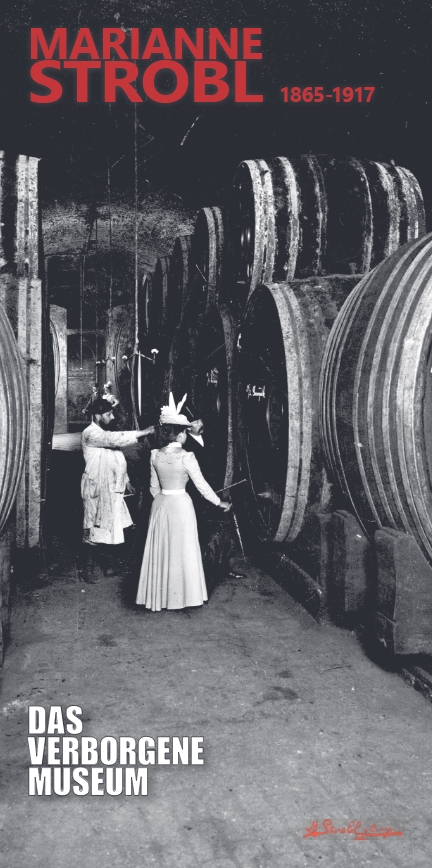Das Verborgene Museum in Berlin, Germany is opening the exhibition “Marianne Strobl 1865-1917: Industrial photographer in Vienna” on 18th September 2019 at 19:00.

Download exhibition flyer here
The legacy left behind by the Viennese photographer Marianne Strobl (1865-1917) proved to be a windfall for historians of photography. Strobl did not want to earn her money in a portrait studio like most of her female colleagues. Instead, between 1894 and 1917, she took her camera out to major construction sites and industrial facilities, and today she ranks as the first woman to pursue industrial photography in the Austro-Hungarian Empire. Specializing in this field was Marianne Strobl’s personal strategy for competing in Vienna’s tough photography m arket around 1900.
We know very little about her personal life: she was unable to train at the ”K.K. Lehr- und Versuchsanstalt für photographie und Reproductionsverfahren” in Vienna founded in 1888, because women could only make a proper degree there from 1908 on.
It is highly probable that she acquired her knowledge about cameras, photographic plates and the arcane world of the dark room from the exclusive Club of Amateur Photographers in Vienna, to which she presumably had access through her husband, the land surveyor Josef Strobl. Contrary to the custom of the time, when studios
used women almost exclusively for ancillary tasks and their names went unmentioned, in the Strobl studio it was the husband who served as an anonymous assistant.
The turn of the century was a time of technological invention and industrial expansion, as the railway network grew and factories, bridges, canals and iron structures sprouted. This development prompted Marianne Strobl to specialize from the outset in documenting major projects in urban design and industrial construction. Taking photographs on these big building sites called for a command of complex photographic equipment in difficult terrain.
Around 1900 Strobl, on commission from the industry, descended into the sewers with her large-format wooden camera, tripod, flash equipment and heavy glass plates. Her images of the Ötscherhöhlen, a unique geological formation of dripstone caves in Lower Austria, are razor sharp.
She recorded civil engineering projects in Vienna around 1900 in her brilliant yet matter-of-fact technique: concrete structures in the Viennese sewers, steel constructions in the gas works at Vienna-Simmering and Leopoldau, a nd the wine cellar “Leibenfrost & Co.”.
Nor did she turn down an opportunity to portray the “Silbererschlössl” in Semmering, a miniature fairy-tale
palace and home to the journalist, publisher and aviation pioneer Victor Silberer. Her pictures circulated in catalogues used by the companies for advertising and in numerous trade journals of the period. Several Austrian archives and museums hold her photographs and documents, as the identification of the signature “M. Strobl” as Marianne Strobl has recently revealed.
The Austrian photographer Marianne Strobl was rediscovered in 2017 for the Photoinstitut Bonartes in Vienna, and an initial exhibition was curated by Dr. Ulrike Matzer. The life and work of this photographer are a sensational find for the history of early industrial photography. With some 60 black-and-white photographs from Austrian collections, together with albums and showcased documents, the exhibition at Das Verborgene Museum in Berlin will introduce this trailblazer from the period around 1900 to an audience outside Vienna.
In cooperation with the Photoinstitut Bonartes in Vienna
Translation: Katherine Vanovitch